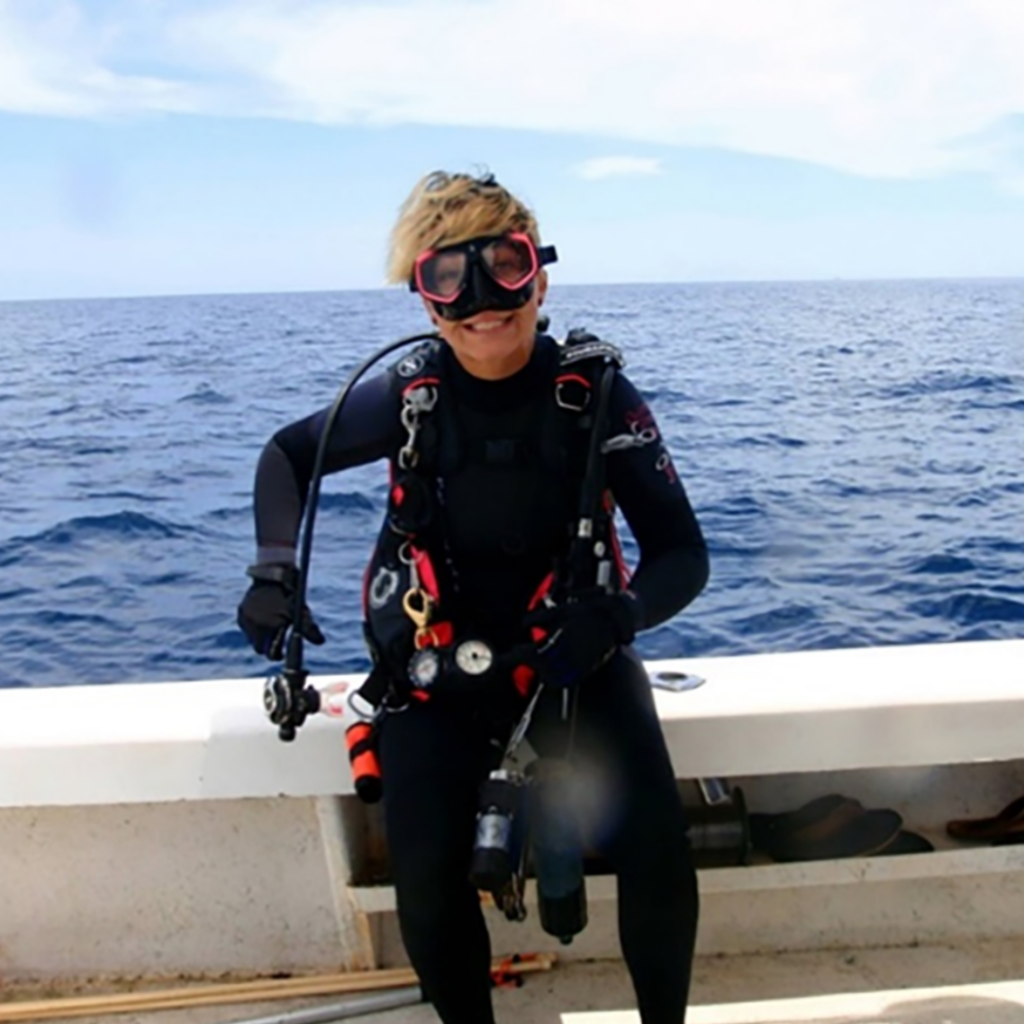Sarah Webb is a PhD candidate at Florida Atlantic College’s Harbor Department Oceanographic Institute. Sarah was awarded the Florida Sea Grant Man Harvey Fellowship in 2024.
Ever since I used to be younger, I knew I wished a life reverse of Disney’s Little Mermaid, Ariel — I wished to be the place the fish are! If given the selection to look at a capturing star or watch one little fish swim round a coral head, I’d select the fish each single time. My curiosity, love and fervour for marine life led me down a path of a number of surprising however stunning moments, like witnessing the critically endangered smalltooth sawfish give delivery throughout a routine evaluation in a degraded estuary they as soon as referred to as residence.
I obtained a BS in Biology and Environmental Research from Chaminade College of Honolulu in 2011, and a MS in Marine Sciences from Savannah State College in 2016. I started my PhD pursuit in August 2021 at Florida Atlantic College’s Harbor Department Oceanographic Institute. I’ve been lucky sufficient to volunteer and intern with Hawaii Sea Grant, NOAA Nationwide Marine Sanctuaries and Georgia Conservancy. I used to be even named NOAA Grey’s Reef Volunteer of the Yr in 2013 and was the primary feminine volunteer diver, aiding with analysis aboard the R/V Nancy Foster.
Though I’ve studied numerous species over time, from phytoplankton to white sharks, my focus has been utilizing acoustic telemetry, a method of monitoring aquatic animals to reply completely different analysis questions. My grasp’s thesis at Savannah State College utilized acoustic telemetry to establish variations in habitat choice and temperature preferences of Atlantic Stingrays in a tidally influenced creek system. These findings have been used to create a Ok-12 exercise revealed in Science Actions.
Since my grasp’s, I had the privilege to work with the Georgia Division of Pure Sources, Florida Fish and Wildlife Conservation Fee, and now, South Florida Water Administration District. These organizations allowed me to sharpen my abilities in fish biology, age and development, histology, acoustic telemetry, and extra. I’ve labored on tasks with a number of estuarine dependent sport fish, grouper and snapper species, and several other elasmobranchs, and contributed to scientific papers on snook and cownose ray migrations.
By means of my work, I met my present advisor, Dr. Matthew Ajemian, at a FACT Community conferences. We realized that our overlapping examine web site and analysis pursuits have been a possibility to bridge the hole between state and collegiate analysis and collaborate on my dissertation collectively.
Taking knowledge from ongoing FWC analysis, my first chapter revolves across the motion and distribution of sportfish, together with juvenile goliath grouper, sheepshead, and noticed seatrout throughout the St. Lucie Estuary in affiliation to freshwater influx from Lake Okeechobee. Preliminary findings from this have been revealed as an appendix within the annual South Florida Water Administration District’s South Florida Environmental Report. Due to this work, a brand new mission was born on the district to proceed monitoring vital sportfish responses and stream regimes from Lake Okeechobee change over time.
Nevertheless, issues haven’t been straightforward or direct for a number of the species now we have been monitoring. There are rising considerations in regards to the lack of seagrass habitat and subsequently, the lack of noticed seatrout within the space. Moreover, the juvenile goliath grouper fishery has been open to restricted harvest for the primary time in many years, regarding dive lovers in regards to the general standing of the inhabitants and the economical significance of this fish.
Due to this fact, the second chapter of my dissertation is specializing in the habitat use over time of the sheepshead, noticed seatrout, and juvenile goliath grouper. Utilizing a long-term dataset from FWC’s Fisheries Unbiased Monitoring program, I’m able to assess catch charges over time and related habitats, and the way the provision of these habitats could have modified over time as a result of anthropogenic or pure causes.
“Life finds a approach”, because the notorious Dr. Ian Malcom from Jurassic Park as soon as said. And certainly, it has discovered a approach again to a historic nursery habitat, the place the smalltooth sawfish was as soon as an considerable and everlasting resident. By means of collaboration with FWC Charlotte Harbor, and FAU-HBOI Fisheries Ecology Lab, I purpose to evaluate the motion and distribution of small juvenile (lower than 5 ft) smalltooth sawfish within the St. Lucie Estuary and adjoining southern Indian River Lagoon. This space as soon as served as a nursery for this iconic species and over time, due to the sawfish restoration hotline (1-844-SAWFISH), an uptick in reviews and incidental catches point out a nursery is reemerging on this space. Though intensive work has been performed on Florida’s west coast by Dr. Gregg Poulakis and colleagues, little or no is thought about how this species is using the degraded estuary on the southeast coast.
Figuring out hotspots and high-use areas can result in extra knowledgeable restoration efforts and water administration choices. The safety and preservations of 1 species can result in higher estuary well being for all inhabitants, together with seagrasses and oysters. Sawfish analysis was performed pursuant to NMFS ESA Allow No. 25864.
Though I’ve remained diligent to my general purpose of being a marine scientist, I wouldn’t have made it to the place I’ve been with no little bit of luck and good timing. I’m eternally grateful to those that have let me leap on a ship with them, pull a web, reel in a fish, and do no matter was wanted, in order that I can proceed to study and develop my abilities and community of fantastic colleagues in order that we will all proceed to collaborate and discover within the title of science.
